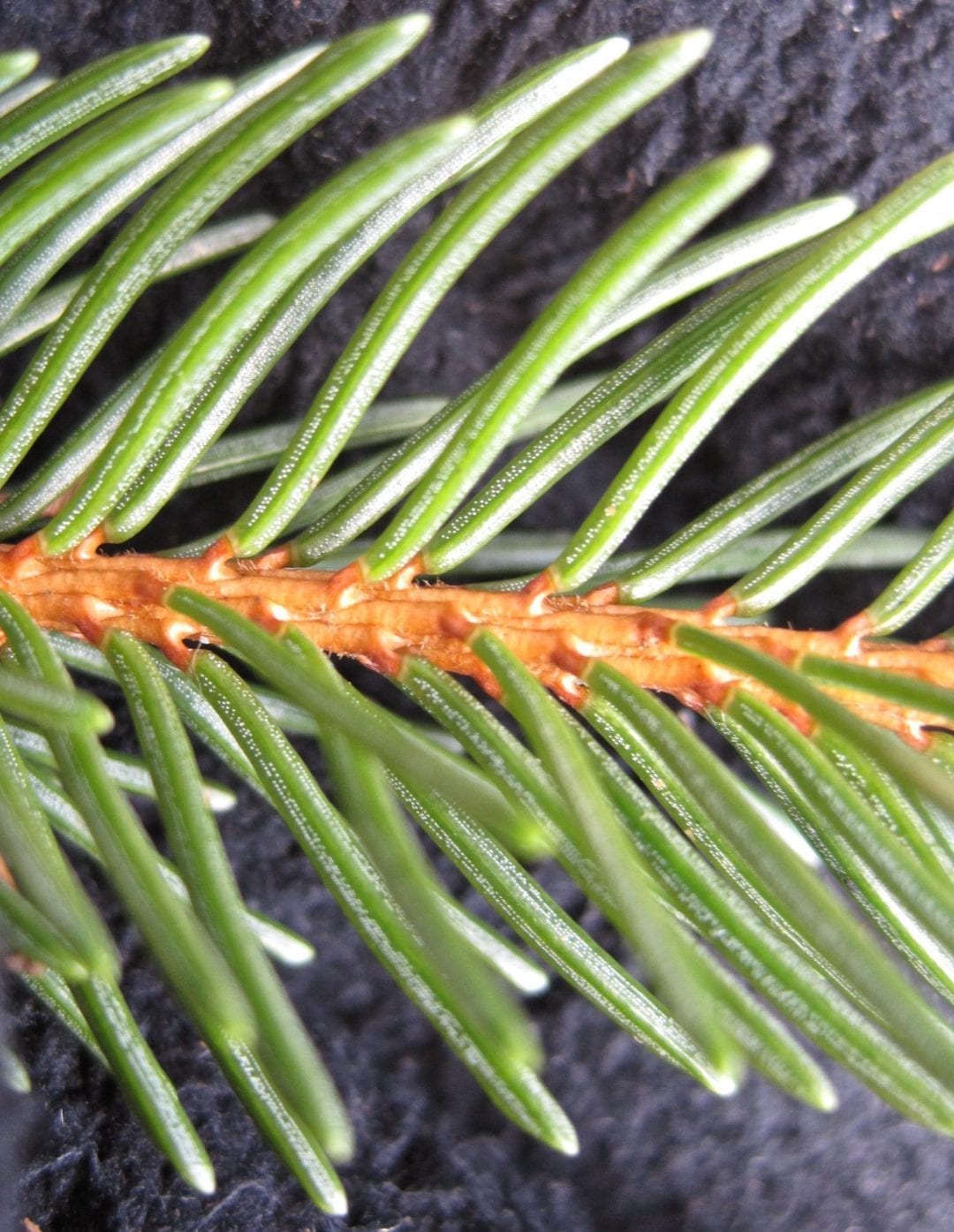Spruce or Firs
There are about 35 species of Spruce worldwide. They are evergreen conifers found right across North America and Eurasia. They form vast forests in northern regions and some, such as the Sitka Spruce, have been widely planted for timber production in Britain. They can easily be confused with Firs but differ in the way the needles are attached to their shoots. They have cones that hang down whereas Firs have cones that stand up. There are about 50 species of Fir worldwide. They are often called Silver Firs. They are evergreen conifers found in upland areas of North America, Eurasia, Central America and North Africa.

The Norway Spruce is a conifer native to Southern Scandinavia, the Alps, the Balkans and Russia and was introduced to Britain around 1500. It is now very common in forests, shelterbelts, parks and gardens. It was the traditional Christmas tree and is probably now the commonest ornamental spruce. It has masses of large cones near the top of the tree. The needles are not spiky.

The European Silver Fir is a conifer native to the Mountains of Europe, from the Pyrenees to the Balkans, was introduced in 1603 and is now common in upland woodlands in the west and north of Britain. It has been planted in large gardens elsewhere. Like all silver firs the leaves tend to look silver when viewed from below because the needles have 2 broad white bands underneath.

The Norway Spruce has an orange shoot and white lines on the needles. Where the needle joins the shoot is a wooden peg characteristic of all Spruces.

The European Silver Fir has two white bands underneath and there is a green pad where the needle joins the shoot. This is typical of all Silver Firs and differs from all Spruces, which have a woody peg.
